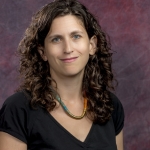
Justin Knabb
State Arts Funding: Good News! There Isn’t That Much Bad News
Posted by Feb 16, 2012

Justin Knabb
While state legislative sessions are just getting underway in the new year, perpetual campaigning for the election is no doubt leaving everyone already feeling cranky and cynical (or is that just me?).
But take heart, advocates! Despite the cornucopia of GOP candidate positions on public arts funding---ranging anywhere from mild tolerance to total abhorrence---President Obama just proposed an increase in NEA funding!
And on the state level, while some familiar faces are making waves, several states are receiving some great surprises and proposals for steady funding:
Connecticut
Last month, Connecticut’s Department of Economic and Community Development (DECD) announced the launch of a $3.1 million local-level creative placemaking initiative in July. Gov. Dannel Malloy’s FY13 budget recommends eliminating all direct art support and redirecting those funds to a statewide marketing campaign that would include tourism. The state’s budget office indicates that arts organizations will be able to compete for $14 million in funding with other programs in the DECD.
Florida
The state legislature is proposing an increase to Florida Division of Cultural Affairs Cultural and Museum Grants. These grants were appropriated $2 million for the current fiscal year, and for FY13 the House and Senate are currently recommending $3,025,000 and $5,050,000, respectively.
Kansas
After zeroing out the state arts commission last year, Governor Sam Brownback reversed his decision and proposed $200,000 for the upcoming fiscal year. However, these funds would be for a new Kansas Creative Industries Commission, a merger of the Kansas Arts Commission and the Kansas Film Commission, housed under the Department of Commerce.






 Emily Peck
Emily Peck







